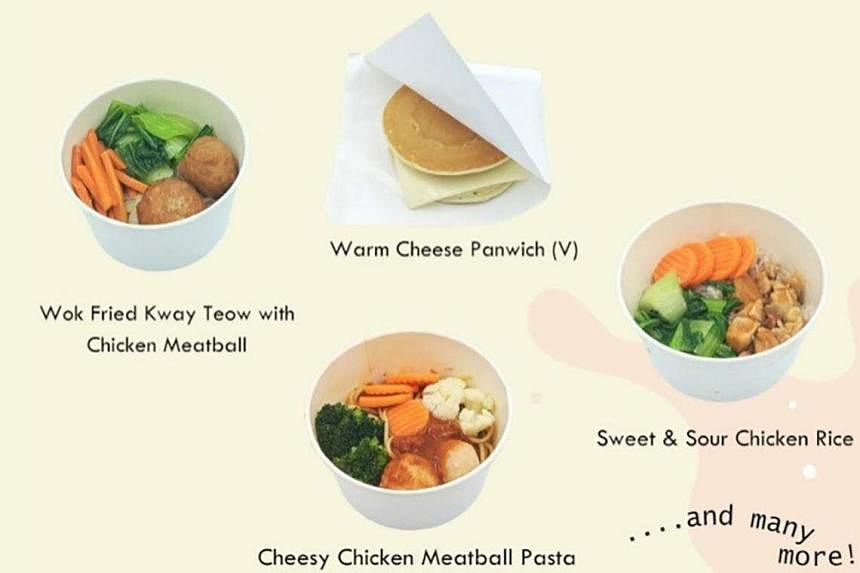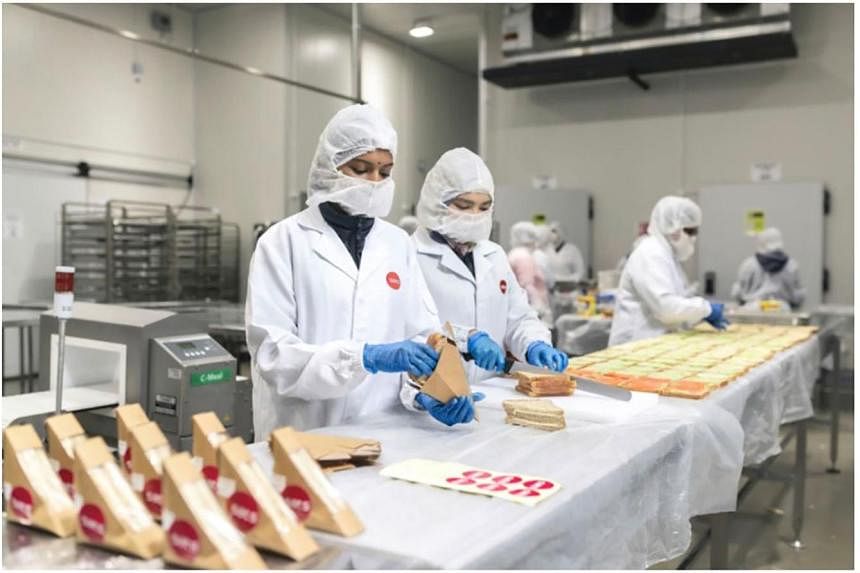SINGAPORE – Recess time at Yusof Ishak Secondary School looks different from that of most other schools.
Instead of buying food and drinks at manned stalls, students here form lines at automated meal dispensers stocked with pre-packed meals.
With schools in Singapore facing difficulties in getting canteen stall vendors, some like Yusof Ishak Secondary are seeking alternatives.
Students go online to pre-order their meals, which are prepared and packed by airline catering and logistics company Sats. They can choose from at least 11 options that cost between $2.10 and $3.
Students simply tap their meal cards on the dispenser to collect their meals.
The meal-dispensing kiosks have been in use since the school moved to its Punggol campus in 2022, replacing all but a noodle stall and a drinks stall.
Automation means students’ time spent in queues is more than halved, compared with a regular canteen stall, a spokesman for Sats said.
A school spokesman said this lets students spend more time connecting with friends during recess.
A similar challenge in getting suitable canteen vendors saw Blangah Rise Primary School engage Sats to cater student meals in 2021.
During recess, Sats staff dish out meals such as satay chicken with fried rice, mini French toast with buttered corn and vegetarian fishball noodles.
Each meal, priced between $2.35 and $3, is prepared according to Health Promotion Board (HPB) guidelines on healthy eating, and menu options change every school term.
Feedback from parents and pupils has been positive, and the school intends to continue with the service, a school spokesman said.
Parent Eric Kuo said he knows exactly what his son, a Primary 3 pupil at the school, eats because of the pre-ordering and payment system. “I usually sit down with him, and we choose the meals from the menu together.”
The boy looks forward to having his favourite dishes, added Mr Kuo, 44, who works in cyber security.
Another parent, Ms Nur Daniella, said her son initially had difficulty adjusting to the food in Primary 1 as the meal options included vegetables, which he dislikes.

“Now he is used to the meals provided,” said Ms Daniella, whose son is now in Primary 3.
The 32-year-old administrative executive said she appreciates how the school invites parents to have a taste of the meals at the start of the year so that they know what is being served to their children.
But she has mixed feelings about the arrangement. “With the set meals, we know what he is eating as the food is pre-ordered. But with a canteen, there will be more food choices available to him.”
Sats said schools in newer estates such as Punggol and Jurong West are in talks to join the company’s pre-order meal service in 2025.
Spectra Secondary School turned to catering by Select Group in 2023 to improve its students’ dietary habits. Food from the caterer’s central kitchen is plated and served by its staff, who also operate a snack bar with items such as bread rolls, burgers and fruit cups.
The school has no manned food and drink stalls, but it has vending machines for snacks and drinks.
Spectra principal Tan Teck Hock said: “By adopting this model, we have also gained a better understanding of our students’ eating habits to help us plan our menu.”
The school works with the caterer to plan the menu, which follows HPB’s guidelines on healthy meals. Breakfast is priced at $2.50 a meal, while each lunch set costs $3.50.
Students can pre-order their meals through Select Group’s online platform, or purchase them on-site using their e-wallets.
Challenges in finding canteen vendors
In November 2023, Holland-Bukit Timah GRC MP Edward Chia had asked in Parliament if the Ministry of Education was considering alternative models to provide healthy and affordable student meals.
He said he had received feedback from Zhenghua residents and schools about the limited food options at some schools due to the challenges in getting vendors to run stalls at these schools.
“It’s actually quite difficult for canteen vendors to operate because the rising cost of ingredients is hurting their margins. At the same time, they all want to continue to provide affordable meals for our children at our schools,” he told The Straits Times.
He added that many stall operators are seniors who will eventually retire, and younger Singaporeans may not want to pursue careers as canteen stall vendors.
An MOE spokesman said most schools currently have an “adequate” number of stalls to meet the needs of students. But from time to time, some schools may face challenges finding stallholders, for example when the vendors retire.
There were 72 advertisements from 51 primary and secondary schools listed on MOE’s website for stallholders as at April 24.
Ms Shawna Tan, 28, ran a stall at Woodgrove Primary School and Canberra Primary School in 2018. “I love to cook, and I like the school environment. However, in my experience, this is not somewhere to grow a career. You don’t see the money coming in.”
While it cost only $10 a month to rent a canteen stall in schools, meal prices had to be capped at $2.50 to keep them affordable, she said.
“I used to run a Western food stall and sold waffles, which the children loved. But the school said every dish I sold had to come with a serving of vegetables, which the kids would not eat. It was an extra cost for food that was eventually just thrown away,” she said.
She paid $350 to get the Muis halal certification, and the cost of ingredients also made it challenging to earn a decent living.
“I learnt that I needed to buy in bulk from wholesalers to keep operating costs low. But, I had nowhere to store and freeze the ingredients. Eventually, I gave it up,” said Ms Tan, who is now a full-time home-based caterer.
Apart from pre-order meal services, MOE said schools may implement other solutions if they cannot find stallholders. It said schools may allow stallholders and their household members to operate up to three stalls at the same school or at another school.
Mr Chia said he was glad that some schools are trying new models such as the pre-order meal service and that big catering companies like Sats are exploring this space.
“As we try out new models, it’s very important to constantly seek feedback from students and parents. The whole idea of innovation is about design thinking, having a sense of user empathy and the experience of our students.”


